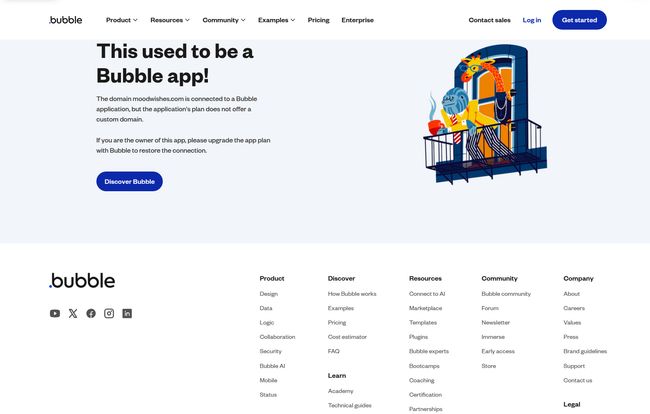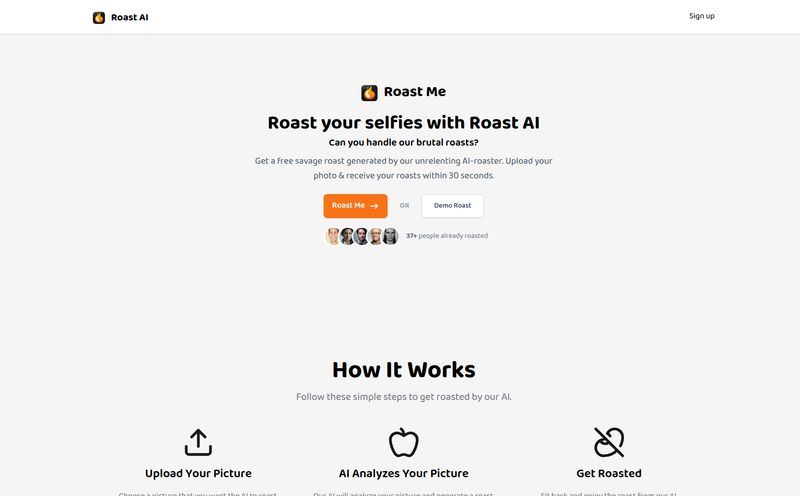We’ve all been there. That Facebook notification pops up: “It’s John’s birthday today!” Your mind goes blank. You type “Happy birthday!” and hit enter, feeling a little… generic. You wanted to say something thoughtful, something personal, but the words just wouldn’t come. Or maybe it’s an anniversary, a graduation, or just a Tuesday when you want to send a nice note.
This is the exact little frustration that dozens of new AI tools are trying to solve. And one that recently caught my eye was called MoodWishes. The premise was simple and brilliant: an AI platform to generate personalized, heartfelt wishes in multiple languages. A digital Cyrano de Bergerac for our modern, busy lives.
It sounded like a perfect little tool to save time and add a dash of creativity to our daily interactions. So, I decided to check it out.

Visit MoodWishes
The Features That Made MoodWishes Interesting
On paper, MoodWishes had all the right ingredients. It wasn’t trying to reinvent the wheel; it was just trying to make the wheel roll a whole lot smoother. As someone who’s seen countless tools promise the world, the focused approach was actually quite refreshing.
AI-Powered Personalization
The core of the platform was its AI wish generator. You'd tell it the occasion, the recipient's interests, and the tone you were going for (funny, formal, sentimental), and it would whip up a message. I’ve always been a fan of tools that tackle creative bottlenecks. This is a massive time-saver, especially when you have to send out a lot of messages. Of course, the risk with any AI writer is that it can sometimes sound a bit… robotic. The goal is to get a message that feels like you, but better. Finding that balance is the secret sauce, and it's what MoodWishes aimed for.
Breaking Down Language Barriers
Another solid feature was its multilingual support. This is a bigger deal than it sounds. For families and friends spread across the globe, being able to send a wish in a native language is a genuinely powerful personal touch. It shows an extra layer of thought. Having an AI that can handle the nuances of, say, Spanish or French greetings without you having to run to Google Translate (and hope for the best) is a real advantage.
Templates and Customization
For those moments when you're completely stuck, MoodWishes offered a library of curated templates. Think of it as a starting point. You could grab a template and then use the AI and customization options to tweak it until it was just right. It's the best of both worlds: structure when you need it, and freedom when you're feeling inspired.
The Cost of Spreading Joy: MoodWishes Pricing
Every SaaS tool lives and dies by its pricing structure, and MoodWishes went with a classic freemium model. It was pretty straightforward, which I appreciate. No confusing credit systems or convoluted tiers.
Here’s how it broke down:
| Plan | Price | Features |
|---|---|---|
| Free | $0 | 1 free wish, no image/voice wishes. |
| Basic | $2 | 4 additional wishes, list of best wishes. |
| Medium | $4 | 10 additional wishes, list of best wishes, 2 free wishes. |
| Premium | $10 | 30 additional wishes, list of best wishes, 10 free wishes. |
Honestly, the pricing felt pretty reasonable. Two bucks to get you out of a jam four times a month? That's less than a cup of coffee. It was an accessible entry point for a useful service. The free plan was just enough to give you a taste, which is exactly what it should do.
The Elephant in the Room: A Tale of a Bubble App
So, I was all set to give MoodWishes a proper go. I had a few birthdays coming up, a perfect test case. I navigated to moodwishes.com, and… I hit a wall. But not a 404 error. It was something far more specific, and for anyone in the tech or startup space, it tells a very particular story.
The page was a default landing page from Bubble, the popular no-code development platform. It read:
This used to be a Bubble app! The domain moodwishes.com is connected to a Bubble application, but the application’s plan does not offer a custom domain.
Oof. My heart sank a little.
For those unfamiliar, Bubble allows people to build complex web applications without writing code. It’s an incredible platform. But to use your own custom domain (like moodwishes.com), you need to be on one of their paid plans. This message means the creator of MoodWishes likely downgraded their Bubble subscription to a free plan, or let it lapse. The app might still exist somewhere in Bubble's infrastructure, but it's no longer publicly accessible at its own address.
This is a ghost ship. A digital Marie Celeste. And it’s a powerful reminder of the brutal reality of launching a product. Building something is one thing; sustaining it is another entirely. You can have a great idea, a slick interface and fair pricing, but if you don't get enough paying users to cover your own operational costs—like the Bubble subscription fee—the project stalls.
It's a cautionary tale I've seen play out dozens of times. We see the polished final product, but we rarely see the hustle behind the scenes: the marketing spend, the server costs, the subscription fees for the very tools used to build the thing in the first place. It's a real reminder that even small, simple-seeming apps require constant fuel to keep running.
So, Where Does That Leave Us?
It feels strange to review a tool that, for all intents and purposes, has vanished. But the idea behind MoodWishes is still very much alive and relevant. The need for quick, creative, and personal communication isn't going anywhere. In fact, as AI becomes more integrated into our lives, we're going to see a lot more tools like this.
MoodWishes was a great concept. It was well-thought-out, addressed a common pain point, and had a smart business model. Perhaps it will be restored one day. I hope so. For now, it serves as an interesting case study—a glimpse of a good idea and a lesson in the tough realities of the digital marketplace.
Frequently Asked Questions
What was MoodWishes?
MoodWishes was an online platform designed to generate personalized wishes and messages for various occasions using AI. It supported multiple languages and offered templates and customization to help users create heartfelt notes quickly.
How did the AI wish generator work?
Users would input details about the event (like a birthday or anniversary), information about the recipient, and the desired tone (e.g., funny, formal). The AI would then process this information to create a unique message tailored to the user's specifications.
Was MoodWishes a free tool?
It had a freemium model. There was a free plan that allowed for one wish to let you test the service. For more wishes and features, there were several paid tiers starting at $2.
Why can't I access the MoodWishes website?
Currently, the MoodWishes domain points to a default page from the no-code platform Bubble. This indicates that the app's subscription plan has likely been downgraded or has expired, which means it no longer supports a custom domain. The service is not publicly accessible at this time.
Are there good alternatives to MoodWishes?
Absolutely. The AI writing space is booming. Tools like Jasper (formerly Jarvis), Copy.ai, and even features within larger platforms like Canva have greeting card and message generation capabilities. A quick search for "AI greeting card writer" will give you plenty of options to try.
A Final Thought
I’m rooting for the little guy. I love seeing creative people use platforms like Bubble to bring an idea to life. While MoodWishes might be adrift for now, the spirit behind it is what keeps the internet interesting. Here’s hoping the winds change and we see it back on the digital map someday. Until then, I guess it’s back to staring at a blank text box and trying to come up with another way to say “Happy Birthday.”
References and Sources
- Bubble.io - The no-code platform used to build the MoodWishes application.



